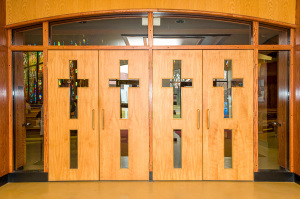6 Steps to Resuscitate a Dying Church

She was on her deathbed.
Every breath was laborious. Every breath was more difficult.
Those who surrounded her knew the end was imminent. It was only matter of time — a very brief time.
But the impossible became the possible. The dying lady survived. In fact, she not only survived, her outlook is very promising today.
Hers is a true story of resuscitation: from the brink of death to survival to improved health to a healthy life.
What about churches? Can a church experience a similar miraculous recovery? Admittedly, I have only seen a few churches with the same story of resuscitation. But I have seen a sufficient enough number to make some concise observations. These observations are among the most encouraging events I have ever witnessed.
How did these few churches go from near death to vibrant life? Here are their stories.
1. A prolonged period of prayer. The members knew that only a miracle of God could save their church. So they decided to set aside a period of prayer, usually a few weeks or a couple of months. Members would gather after the worship service. Some would gather in homes. They would admit their total dependence on God. And they would place everything about their churches at His mercy and in His will.
2. A covenant to forsake self. When a church dies, there is the predictable prologue of self-centered, self-serving membership. Church members argue about the style of music, the length of the sermon, the types of ministries and programs, and even the type of furniture in the church. Membership becomes about me, myself, and I. In the resuscitated church, the members covenant to put self last. They agree they will not demand their way, but seek to put others first. Some of the churches even create a written covenant.
3. A willingness to kill sacred cows. This process is often an extension of the previous commitment. As the members covenant to forsake self, they commit to doing away with programs, ministries, events, rooms, furniture, or anything that has become a sacred cow. They often don't see those sacred cows until their eyes have been opened in the prolonged period of prayer.
4. A commitment to see through the eyes of the outsider. As the members continue to forsake self, they begin to ask how the church is viewed from the perspective of the outsider. They may actually engage a person to visit their church and share their experience. It is amazing to see how this process transforms facilities, worship, greeters' ministry, and children's ministries, to name a few.
5. An agreement to connect and invite. Members commit to be intentional about developing relationships with people outside the church. They set prayer goals of how many people they will invite to church each month. The church begins moving from an inward focus to an outward focus.
6. A decision to move beyond the negative naysayers. This core of members realizes that not everyone will be on board. There will always be those who view church as a spiritual country club with perks and privileges. Indeed, in most of these resuscitated churches, there was stiff resistance, adamant opposition, and financial threats. But the members were loving but firm. No longer would their church be controlled by the naysayers, critics, and bullies. They would stand together and stand with others who were attacked and maligned.
Is church resuscitation common? No.
Is church resuscitation possible? Yes.
In God's power, yes.
Originally posted at thomrainer.com.





























